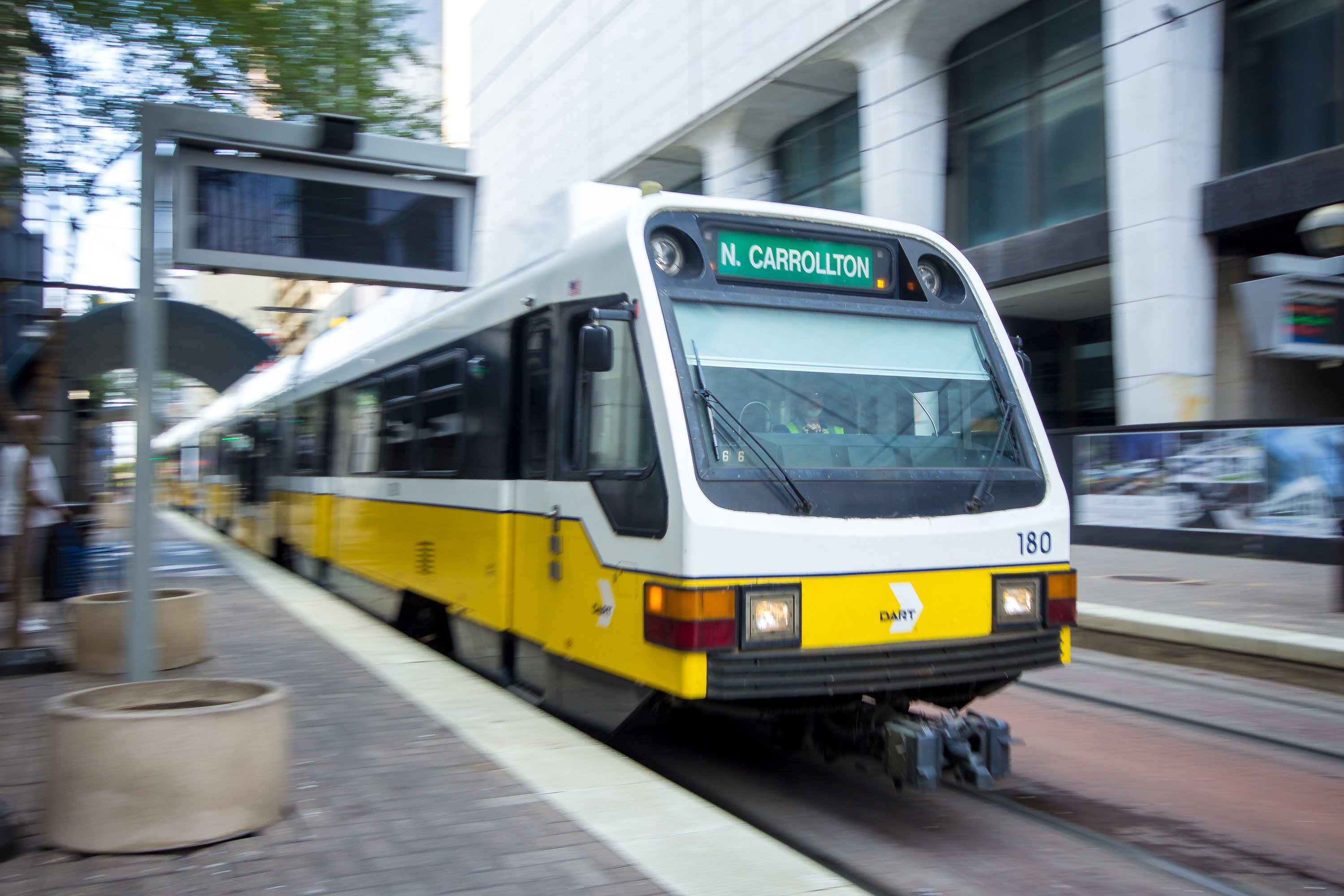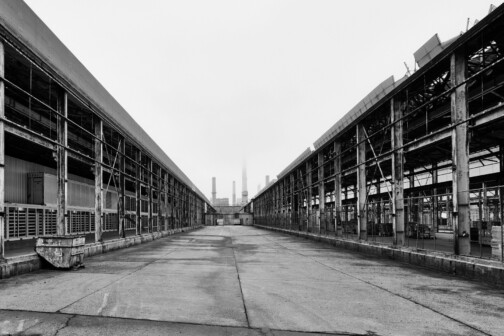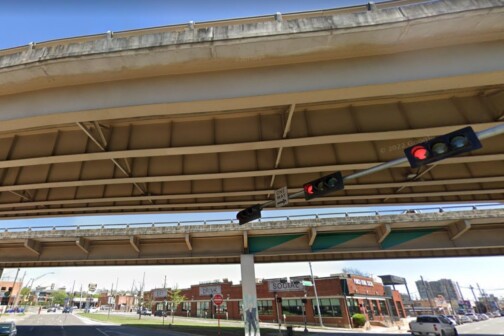D2, the $1.7 billion subway planned for downtown Dallas, is no longer part of DART’s long-term plans. Dallas Area Rapid Transit last month removed the project from its 20-year financial plan, freeing the agency to spend the money it had planned to allocate to the subway on other initiatives.
“Taking it off the 20-year financial plan doesn’t mean it’s dead,” said Patrick Kennedy, one of Dallas’ appointees to the DART board. “It can always be added back at any time. The big issue is it takes up a lot of space on the 20-year financial plan, therefore you can’t do anything else.”
D2 was a subterranean relief valve, a way for DART to double the system’s rail capacity by creating a second line downtown that could both accommodate more riders and divert trains in case of a problem somewhere on the track. But ridership cratered during the pandemic and remains about 68 percent of what it was in 2019, according to agency spokesman Gordon Shattles. Increasing capacity does not necessarily result in an increase in riders, and so DART is choosing to spend its money elsewhere.
That includes new trains, upgrading its signal system, and additional security, cleanliness, and other operational services aimed at improving reliability. Removing the project from the financial plan allows DART to spend $1.3 billion on these other programs, Shattles said. Kennedy says he’d like to see DART begin exploring how to expand the streetcar system to reach other neighborhoods in downtown Dallas’ urban core, an “aspirational” idea that wouldn’t be possible if the money were tied up in D2.
“This change frees up over $1 billion in debt capacity that has never been spent,” said Councilman Omar Narvaez, the chair of the City Council’s Transportation and Infrastructure Committee. “This is a positive move by DART to be able to continue its focus on the improvements necessary to achieve their goals of a clean, safe, and reliable mass transit experience.”
Meantime, the agency is looking for ways to replicate some of what the subway was designed to accomplish without a major capital investment. Elizabeth Reich, DART’s chief financial officer, says the debt issued for the Silver Line from Plano to DFW Airport had no impact on the decision to remove D2 from the financial plan.
“This decision is really about what’s needed downtown based on current factors and our ability to move people through the downtown area,” she said. “Our rail lines run along the same alignment so there are lots of options for how to increase capacity through downtown, which is what D2 was designed to do. At this point, there was a desire on everybody’s part to take this out of the financial plan. This was agreed to by the city of Dallas.”
D2 was about as close to a done deal as major transportation projects get. It required many hours of research, debate, planning, and public meetings to secure the Dallas City Council’s resolution in support of the project, which was delivered in March 2021. The alignment would have extended south from Victory Park into downtown and east along Commerce Street until reaching a subway station under an existing bus transfer center below Pacific Avenue. After agreeing to move the line below ground, DART eventually garnered support from the North Central Texas Council of Governments and the Dallas City Council, as well as neighborhood organizations along the alignment’s path.
“Our written agreement with DART includes continued study of the D2 alignment and we understand DART’s 20-year financial plan incorporates funding allocated to evaluating transportation options in the downtown area,” read a statement from Assistant City Manager Robert Perez, whose purview includes infrastructure. “While the agreement between DART and the City of Dallas specifies the D2 alignment, DART and the City of Dallas have discussed reimagining D2 for other options including streetcar expansion. Ultimately, whatever’s constructed will be the result of continued partnership between the DART, City of Dallas, elected officials, and stakeholders.”
It took years to reach an agreement on this path, and the project’s planning extended back to the tenure of former president and executive director Gary Thomas, who retired in 2020. Thomas had led an agency that aggressively pursued federal grants for major capital projects, even when some of its partners questioned their necessity. Originally, D2 was planned as a surface line through Jackson Street, which would have impacted everything from Oncor utilities to the historic First Presbyterian Church.
Kennedy said last month’s decision “is due to a leadership shift and what the new administration’s priorities are, which I don’t disagree with,” referring to new CEO Nadine Lee and her executive team.
DART was poised to pursue federal grants worth at least $800 million, just about half of the total cost of the project. The Federal Transportation Administration had issued its Final Environmental Impact Statement, an important milestone that allowed the transportation agency to continue its design and engineering work.
It’s hard to overstate how major this about-face is. The planning for D2 goes back to 1990, when the city of Dallas and DART signed an interlocal agreement that dictated any light rail downtown be below ground. That obviously didn’t happen—DART couldn’t afford it, which is why trains rumble down the transit mall along Bryan Street—but in 2007, the agency agreed with the city to build a subway if ridership reached certain thresholds.
DART never achieved an hourly ridership of 8,000 people, but the agency and its partners all agreed that capacity was a growing problem. DART built the largest light rail system in the nation, but all the trains eventually run through that one choke point in downtown Dallas. D2 was to be the solution.
In February 2022, the DART board signed off on the alignment changes that spared Deep Ellum from surfacing train cars. But by October 2022, DART staff was suggesting to its board that they believed they could “identify less capital-intensive alternatives that achieve similar outcomes,” Shattles said.
That includes things that have already occurred. DART won a federal grant to extend its platforms on the Red and Blue lines, which allows the agency to run three cars per train instead of two. Traffic engineers are studying ridership trends to better account for a shift to remote work. And DART has been working with its 13 member cities to find ways to increase density by way of housing, retail, and office space near rail stations. Dallas City Manager T.C. Broadnax has made it a priority to rezone parking lots near some rail stops that could increase density by adding commercial and residential.
“In a good way, this allows us the freedom that we don’t have to think about this thing that isn’t an immediate need,” Kennedy said. “Let’s focus on our immediate needs. Then we can be doing the things we should be doing anyway.”
To Kennedy, that means increasing ridership by getting more people near public transit, where it makes sense to take DART instead of a private vehicle. Right now, he said, D2 isn’t needed.
As for now, after years of haranguing and planning, the subway is on ice.
Author







